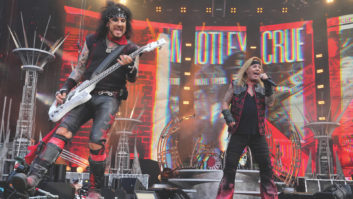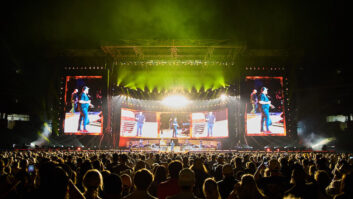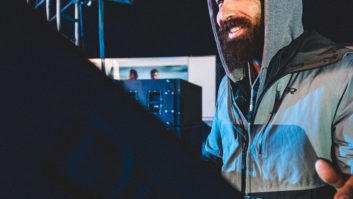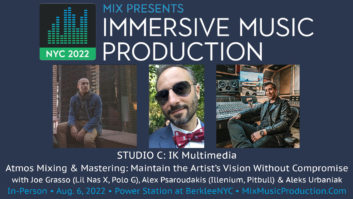The name Sound Station Seven sounds like it was inspired by science fiction, but it actually comes from the studio’s real-life history. The Providence, R.I., facility is built into an 1870s firehouse, once referred to as “hose number seven” or “ladder number seven.” “In many ways, the firehouse was a perfect building for a studio,” explains studio owner John Jacobson. “The ground level was built to hold fire engines and can easily hold the weight of floated rooms and heavy equipment.”
After Jacobson acquired the firehouse, he enlisted the help of Robert Pemberton, who was then working part-time for Fletcher at Mercenary Audio and part-time as a tech for Phil Green at Normandy Sound. “I quickly realized that Rob was an extremely talented audio engineer as well as a gifted technician,” Jacobson says, “and by the end of the install, I hired him to be the chief engineer.”
“John is really great to work for, especially from the technical side,” Pemberton says. “From looking at the gear to all the wiring, there was no skimping on anything; so technically, behind the scenes, the studio’s just as good as it looks.”
Pemberton did the studio wiring himself, with Mogami cable, and helped Jacobson with the initial equipment selections. But just as important as the system design was the feel that Jacobson wanted the studio to have. “When we started Sound Station Seven,” he says, “bands on all levels of the industry were putting together studios in their homes, rented mansions and other locations. This was definitely taking away business from commercial studios. I figured the two major reasons for this were that artists wanted to save money by `getting off the clock,’ and artists wanted to create a more relaxed, informal environment than they found in many commercial studios.
“We wanted to create an environment that had the feeling of a bed-and-breakfast rather than a hotel. Sound Station Seven has the feeling of a retreat studio, but unlike most retreat studios, we are located in a major city just three hours from New York and one hour from Boston.”
The studio’s been busy since it opened in 1997, serving a variety of local and internationally known artists, including the Amazing Crowns, Roomful of Blues, the Mighty Mighty Bosstones, Combustible Edison, Joey McIntyre, Juliana Hatfield and others. However, Jacobson was listening closely to his clients, and he says that “early on, it was clear that our main weakness was the control room. It was too small, and the acoustics needed work. In the fall of 1998, Rob and I decided it needed to be redesigned from the ground up.”
Jacobson and Pemberton consulted with John Klett of Singularity Enterprises. Klett’s company provides a variety of services to studios, including system integration and design, and equipment mods; he had helped API’s technicians install the studio’s 48×24 Legacy console, which Jacobson and Pemberton definitely wanted to keep. (“An API Legacy is one of the few boards made today that doesn’t significantly depreciate, and you cannot beat the sound,” Jacobson says.) “John had also installed some Martech upgrades to our plates,” Jacobson says, “and he helped troubleshoot the room. When it came time to redesign the control room, we definitely wanted his opinion, and he said he would pick [designer] Fran Manzella [of FM Design].
“Structurally, we demolished the existing control room and adjacent support spaces,” Manzella says. “The new control room is the complete width of the building – over 30 feet – and is structurally floated on a compound wood-framed floor system. The front of the room has its own floor section that is filled with cement to provide a massive foundation for the free-standing Quested main monitor system. With a relatively overall light floor weight, we have very little transmission of low-frequency through the floor to the mix position.
“Architecturally, we tried to be sensitive to the aesthetic of the building. We designed a spanned ceiling system that was part of the floating construction and used exposed large-dimension timber framing. This duplicates the type of framing used elsewhere in the building. We also integrated brick veneer and stucco finishes to match the masonry exterior of the building.”
A few major equipment changes were also made. Klett rebuilt an ATR 102 half-inch 2-track deck to be used for mixdown and built a custom 2-inch 8-track with heads from John French and additional parts from MDI Precision Motorworks. More new gear includes the freestanding Quested Q210 mains with QSB118 subwoofer and a Pro Tools MIX|24 system. Matt Marinelli of Coral Sound helped put together the studio’s patchbay.
Jacobson and Pemberton are proud of the new control room, which was completed last March. Now, it’s back to regular studio business, serving their very wide range of clients. “To make it as a studio in Providence, we have to be open to all kinds of music,” Jacobson says. “We have worked with ska, jazz, classical, rock, rap, punk, world beat, Christian music, even opera. In this market you have to be open to anyone who wants a high-quality recording.”







